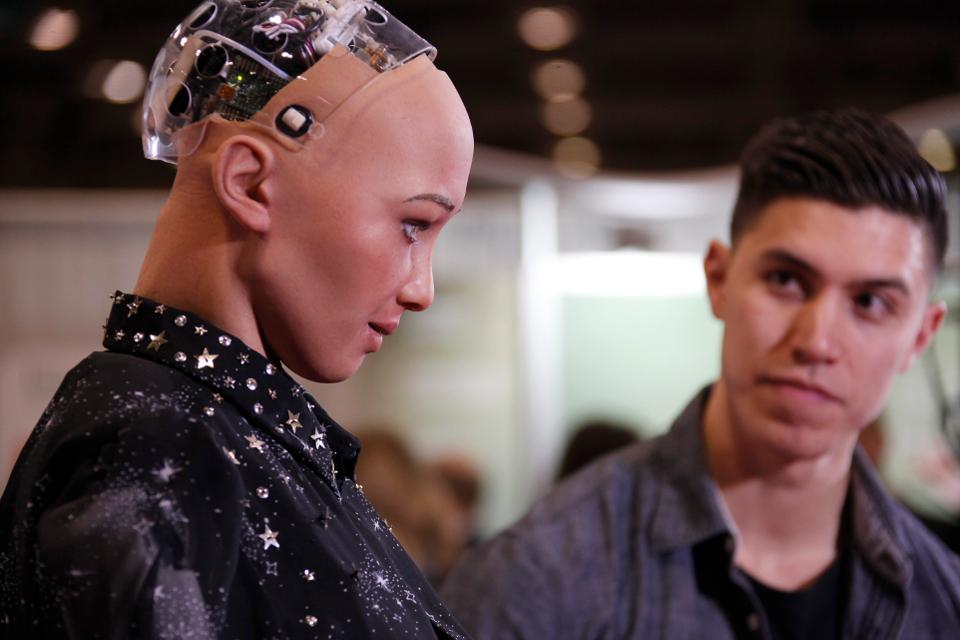Last December, a U.S. National Security Strategy (NSS) declared artificial intelligence (AI) “critical to America’s economic growth and security,” but warned that China and other countries have attempted to “steal U.S. intellectual property” in the field of AI.
copyright by www.forbes.com
 To be fair, China has made great strides lately in strengthening its own enforcement of patent rights. Nonetheless, the NSS warned that stronger efforts were needed by U.S. companies to “curtail intellectual property (IP) theft by all sources” of our cutting-edge AI research. But as telecommunications giant AT&T and other firms can attest, only human intelligence can stop the theft of artificial intelligence.
To be fair, China has made great strides lately in strengthening its own enforcement of patent rights. Nonetheless, the NSS warned that stronger efforts were needed by U.S. companies to “curtail intellectual property (IP) theft by all sources” of our cutting-edge AI research. But as telecommunications giant AT&T and other firms can attest, only human intelligence can stop the theft of artificial intelligence.
AT&T deploys a sophisticated suite of AI tools to manage the nearly 200 petabytes of data traffic that flows through its global telecommunications network every day (equivalent to 100 trillion pages of printed text). AT&T’s artificial intelligence system may be smart enough to manage a vast communications network, but like a clever dog that can’t recognize itself in the mirror, it lacks the ability to tell when its own software brains are being pilfered for use in other companies’ (or other countries’) products and services.
So to protect its patented AI innovations, AT&T deploys a unique “human search engine” called Article One Partners (AOP) to scout out IP theft. The group is a crowdsourced network of 42,000 researchers in 170 countries speaking 114 languages — 42% of whom have graduate degrees in a variety of science and technology fields.
Acquired last year by the global intellectual property services firm RWS, Article One Partners got its start a decade ago as a “patent troll killer” working for defendants in high-stakes patent infringement suits. There, its sleuths earned a reputation for finding patent-busting prior art in hidden corners of the globe that non-human algorithms and Internet search engines could never reach — an unpublished Korean-language PhD dissertation in an academic laboratory, a handwritten document in a rural Norwegian library, even an old camera lens in a New York City pawn shop. In each case, AOP’s research proved that a patent troll’s supposedly “novel invention” wasn’t so novel after all, thereby invalidating the patent.
But in recent years, AOP investigators have begun to make a name for themselves in a burgeoning new field called Evidence of Use (EoU) research. Working for tech clients like AT&T, for example, they search for evidence that the company’s patented innovations are being used without permission in other companies’ products and services. If they discover such evidence, it can be used to confront an infringer and force it to compensate the patent owner. […]
read more – copyright by www.forbes.com


Last December, a U.S. National Security Strategy (NSS) declared artificial intelligence (AI) “critical to America’s economic growth and security,” but warned that China and other countries have attempted to “steal U.S. intellectual property” in the field of AI.
copyright by www.forbes.com
AT&T deploys a sophisticated suite of AI tools to manage the nearly 200 petabytes of data traffic that flows through its global telecommunications network every day (equivalent to 100 trillion pages of printed text). AT&T’s artificial intelligence system may be smart enough to manage a vast communications network, but like a clever dog that can’t recognize itself in the mirror, it lacks the ability to tell when its own software brains are being pilfered for use in other companies’ (or other countries’) products and services.
So to protect its patented AI innovations, AT&T deploys a unique “human search engine” called Article One Partners (AOP) to scout out IP theft. The group is a crowdsourced network of 42,000 researchers in 170 countries speaking 114 languages — 42% of whom have graduate degrees in a variety of science and technology fields.
Acquired last year by the global intellectual property services firm RWS, Article One Partners got its start a decade ago as a “patent troll killer” working for defendants in high-stakes patent infringement suits. There, its sleuths earned a reputation for finding patent-busting prior art in hidden corners of the globe that non-human algorithms and Internet search engines could never reach — an unpublished Korean-language PhD dissertation in an academic laboratory, a handwritten document in a rural Norwegian library, even an old camera lens in a New York City pawn shop. In each case, AOP’s research proved that a patent troll’s supposedly “novel invention” wasn’t so novel after all, thereby invalidating the patent.
But in recent years, AOP investigators have begun to make a name for themselves in a burgeoning new field called Evidence of Use (EoU) research. Working for tech clients like AT&T, for example, they search for evidence that the company’s patented innovations are being used without permission in other companies’ products and services. If they discover such evidence, it can be used to confront an infringer and force it to compensate the patent owner. […]
read more – copyright by www.forbes.com
Share this: